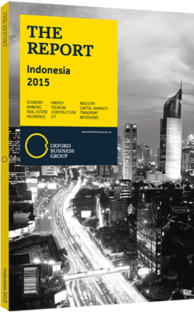Dian Siswarini, President-Director and CEO, XL Axiata: Interview

Interview: Dian Siswarini
What are some alternative sources of growth?
DIAN SISWARINI: Telecoms operators in Indonesia need to find alternative sources of growth. We need to open new lines of business, leveraging our expertise and knowledge, while also staying relevant to our core business. Internet is definitely an area of expansion, and ecommerce in particular provides a great opportunity for growth. The segment is booming, and many companies are expanding their online retail platforms.
However, e-commerce is still a small market, representing just 2% of all retail business. To that end, having more players in the market is a positive thing, as it will help grow the ecosystem and raise awareness about opportunities going forward. Foreign expertise will be very important for reaching the full potential of online platforms. Indonesia has all the ingredients for success: a young and tech-savvy population, rising smartphone penetration and a challenging infrastructural environment that necessitates the use of online platforms.
How will digitalisation impact the local economy?
SISWARINI: It is undeniable that greater digitalisation will boost efficiencies and lower labour costs for businesses, especially in the industrial sector. However, local ICT companies also need to consider the social impact. While the digitalisation of business processes brings greater efficiency and productivity, helps remove the possibility of human error and eliminates the potential for fraud, it also inevitably reduces the amount of labour needed, which in an emerging economy like Indonesia – with a pressing need for job creation – is something that must be carefully considered.
How can telecoms operators strike a balance between profit and broader social development?
SISWARINI: Telecoms operators have a commitment to increase shareholder value, but we also have a strong dedication to improving the lives of Indonesians. As we roll out new technologies across the country, we see that digital advertising is an area with great room for growth, particularly for small and medium-sized enterprises in rural areas that lack the means or resources to invest in this field. Indeed, there are many traditional products manufactured by local artisans that can be advertised and promoted online to help boost sales.
Another area of focus is maritime development, following on President Jokowi’s maritime axis development plan. In this regard, we are developing a project in collaboration with the Ministry of Maritime Affairs and Fisheries to equip fishermen with the necessary technology to improve their overall performance and raise safety standards. We are providing them with a kit that includes a weather report, a fish-mapping tool, an updated market price list and a GPS system. We aim to have 50,000 fishermen in this project by the end of 2015 and 800,000 fishermen within three years.
What are the infrastructure costs for telecoms?
SISWARINI: Infrastructure is essential and is needed on many levels; however, it is particularly expensive in a country like Indonesia, which is spread across 17,000 islands. Telecoms operators are dependent on infrastructure developments in areas such as power supply and distribution before we can start deploying our network. We often have to build our own power stations and generators in order to construct our communication towers, and this adds to costs – particularly in rural areas. Telecoms infrastructure in rural areas is 2.5 times more expensive on average than in cities like Jakarta or Surabaya, and skilled labour is also limited.
As a result, data-service margins are low compared to voice, even though prices in Indonesia are among the lowest in the world, at around $1.2 per GB. Operators are struggling to find the balance between providing good service at reasonable prices, and paying close attention to the real purchasing power of Indonesians and the lack of infrastructure. The best way to boost telecoms margins is to consolidate the local market, as we have too many players. Operators would also do well to cut costs by pursuing greater internal efficiencies.
You have reached the limit of premium articles you can view for free.
Choose from the options below to purchase print or digital editions of our Reports. You can also purchase a website subscription giving you unlimited access to all of our Reports online for 12 months.
If you have already purchased this Report or have a website subscription, please login to continue.

